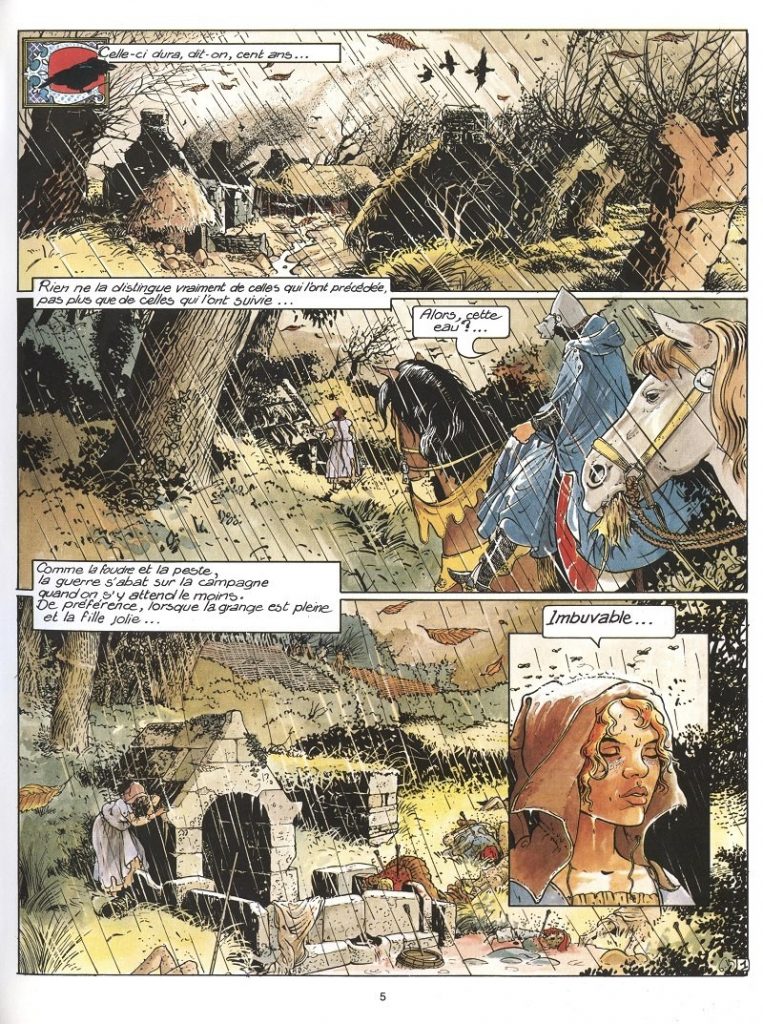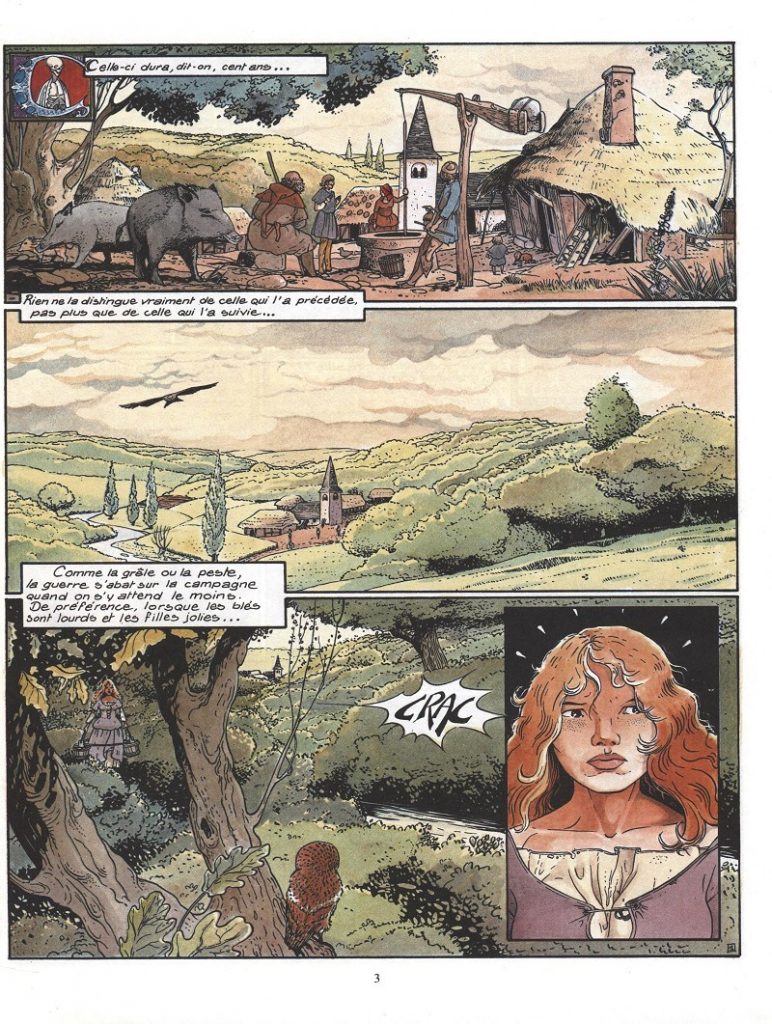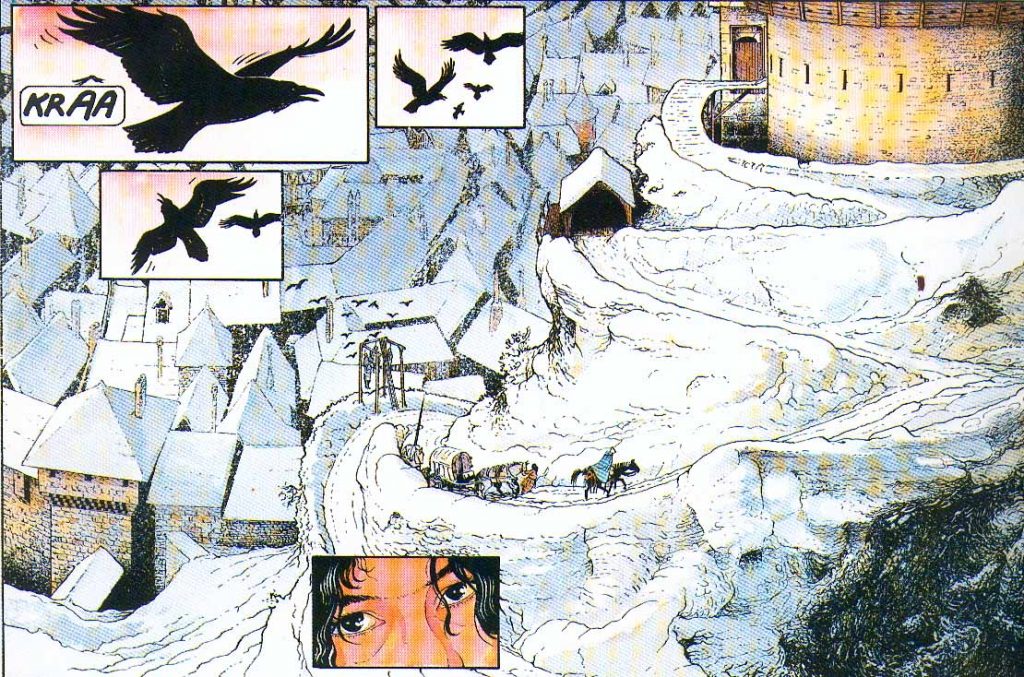Review: Les Compagnons August 20, 2017
Author: Beach Combing | in : Medieval , trackbackThe Hundred Years War in France and three damaged people are thrown together by events: the grand-daughter of a witch; a knight with half his face burnt off; and a cowardly young man. The knight leads them on a trail across the burning countryside. He is clearly rushing towards his destruction. The young man and young woman despise each other and constantly exchange slights and blows. The world they live in is suffused with the supernatural: humans share a landscape with wolf men, fairies, and reptilian mermaids. And this world is dangerous. Only one of the three will survive the journey. The characters they meet range from a sociopathic pilgrim, to a dreamy but diamond-hard troubadour, from a promiscuous Jewish actress, to a randy monk.

Welcome to the Travellers in the Twilight (Les compagnons du crepuscule) by François Bourgeon – seven years in the making, 1983-1990 – one of the great European graphic novels of the last fifty years. Beach writes the title above in English but the comic was put together in French and has only been translated into German, Italian and Spanish: so many readers of this blog will have problems enjoying it. That is a great pity, first, given the excellence of Les compagnons and, second, thinking of some of the bilge comics published in the UK. The artwork is simply extraordinary and a subsequent book Dans le sillage des sirènes (1992) was published to show a scattering of the medieval models used in the construction of the tale, and to celebrate the folklore and historical background.

For Beach the single most interesting things in the book is Bourgeon’s treatment of the impossible world of goblins. This blogger cannot stand fiction with elves in it; he groans when anyone in a film makes friends with a fairy; he is not even very keen on ghosts in short stories. It is so difficult to show the ‘unseen’ and not lose credibility: this is not because the unseen world cannot be (that is up for eternal debate); it is because the unseen world should be, well, unseen. This causes problems in novels but is practically insuperable in comics. Bourgeon here, though, makes it work with a curious technique. The characters interact with these creatures in their dreams, where a parallel plot takes them, for example, into the heart of a nest of fairies that speak only in rhyme. Against all the odds it works. The least successful part of the saga is the arrival of a supernatural horseman in the waking world in the last part of Les compagnons.
Beach spent a very pleasant afternoon rereading Les compagnons this summer, while many of his friends and much of his family were wasting their time on the beach. He writes this in gratitude. Recommended in the highest possible terms.
Other great reads: drbeachcombing At yahoo dot com
Morten writes, 29 Aug 2017: Just a brief addition to your statement “has only been translated into German, Italian and Spanish “, which is incorrect, as it has also been translated into Danish (in 1983, 1986 and 1990). The fourth album by Michel Thiébaut has not been translated into Danish. It is actually quite curious, but there is a longstanding tradition for translation European comics (i.e. French, German, Spanish, Dutch, Belgic etc.) to Danish, meaning that as a Dane, I have access to a greater range of comics, than a British or American reader, even though Danish is a rather small language.



